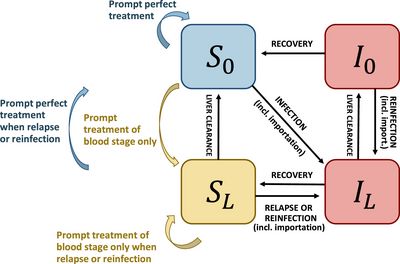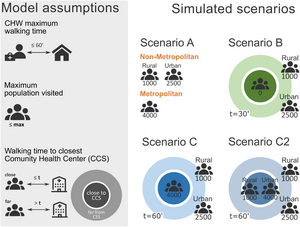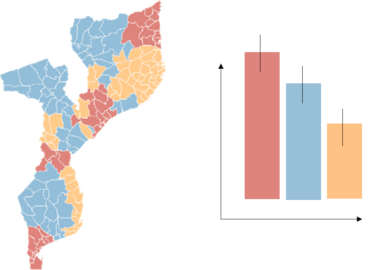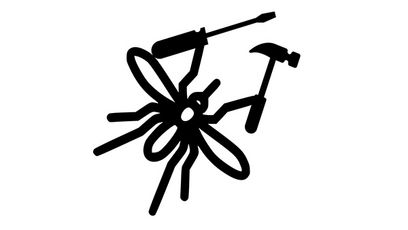Group | Analytics and Intervention Modelling
The Analytics and Intervention Modelling (AIM) group contributes to build a data-driven and evidence-based recommendations to support National Malaria Control Programmes in their fight against malaria. This is possible by using state of the art infectious disease modelling, health economics frameworks and the growing evidence generated by real-world data.
Together with local partners, we co-create action plans to prioritize the most impactful interventions in countries around the globe to fight malaria. We strongly believe that collaborations are essential to ensure long-term sustainability of health services and also believe that sharing knowledge with in-country training and staff exchanges contributes to capacity strengthening.
We bring together experts in disease modelling, epidemiology, statistics, computer science, health economics and project management.
The geographical unit considered in the models could vary from national to local scales such as districts, depending on the data available as well as the country-specific malaria program operational units.
We are able to attach cost data to simulation outputs to predict the costs and the cost-effectiveness of different strategies, and compare the relative efficiency of the plans. Such applications of cost-effectiveness analysis ensure that the highest health benefit is achieved for a given resource constraint.
Our group supports the 'High Burden to High Impact' initiative to implement subnational tailoring of interventions using local data to develop sound national strategic plans and optimized resource prioritization. This work contributes to the WHO Collaborating Centre for Modelling, Monitoring and Training for Malaria Control and Elimination based in the Health Interventions Unit
Our focus is malaria but we are able to model also other infectious disease such as neglected tropical diseases (NTDs).
We are also the co-funder of the Applied Malaria Modelling Network (AMMnet), a community of applied malaria modellers, data analysts, and partners with the common goal of improving the quality of analytical support offered to malaria programs.
Our work is mainly funded by the Clinton Health Access Initiative (CHAI), the Gates Foundation, the President’s Malaria Initiative (PMI) and The Global Fund.
Have look at some of our projects in the below sections to learn more about our work. You can find here some of our open access tools.

Emilie Pothin
PhD
Group Leader
+41612848737
emilie.pothin@swisstph.ch
Key Projects
Sub-National Tailoring of Malaria Interventions in Mozambique
Malaria remains a public health problem in Mozambique, with more than 10 million cases confirmed in 2020 (WHO Malaria Report 2020). The Mozambique National Malaria Control Program (NMCP) leads the fight against malaria in the country through the development and implementation of National Strategic Plans (NSP) that define the strategies for fighting malaria including the interventions selected (i.e. bed nets, insecticide spraying, drug based interventions etc.) and their distribution in the country. NSPs are regularly updated and reviewed and form the base for funding request to international donors such as the Global Fund to Fight AIDS, Tuberculosis and Malaria. We provide model-based evidence to support the development and review of the NSP and the application for the Global Fund funding requests in Mozambique. Read more

Plasmodium vivax Transmission Model
Swiss TPH has developed a model for Plasmodium vivax transmission to support decision-making and advocacy in countries where this parasite is dominant. This compartmental model accounts specifically for the liver stages of P. vivax malaria and it has recently been refined to include imported infections as well as treatment of blood and/or liver stages parasites. Additional ongoing development of the model include the account for delay in treatment, the inclusion of additional interventions and extensions to the stochastic framework for estimating probabilities of elimination under different scenarios. Read more
OpenMalaria Workflow and OpenMalariaUtilities R Packages
The work of the Analytics and Intervention Modelling Group is based on OpenMalaria: an open-source C++ program for simulating malaria epidemiology and the impacts on that epidemiology of interventions against malaria. OpenMalaria has a very broad range of potential applications, therefore, in order to use it for the simulation of country-specific analyses, such as the simulation of a national strategic plan, the prioritisation of interventions or cost-effectiveness studies, additional tools are required (Runge et al. 2020). Hence, the Swiss TPH team has developed a workflow tool that enables to use OpenMalaria for applied country-specific scenario simulations.
At the core of our OpenMalaria Workflow is the OpenMalariaUtilities R package which is developed to allow the use of OpenMalaria directly from R. The package has been the main tool used by the Analytics and Intervention Modelling Group since November 2021 and it is now publicly available. This interactive workflow allows the user to utilize the OpenMalaria modelling suite for specific geographies in an easy-to-use manner. Read more

Community Health Workers Geographical Placement in Haiti
The demand for geographic information systems (GIS) and related tools is increasing among public health decision-makers, as the utility is being recognized and both methodological innovations and computational capacity evolve. Simulation studies of optimal geographical placement scenarios for health services, including community health workers, have been developed to inform programmatic decisions related to the size of catchment areas and to identify where there are coverage gaps and/or priority areas for scale-up. In 2019-2020, our group provided support to the Haitian strategic plan on community health by providing scenarios for optimized geographical community health worker placement, accounting for travel time, population density and health facility locations. Read more
Links & Downloads
Our Projects
All Swiss TPH ProjectsLatest Publications
All PublicationsCaminade C et al. Climate change and malaria control: a call to urgent action from Africa's frontlines. Malar J. 2025;24:179. DOI: 10.1186/s12936-025-05431-5
Lemant J et al. Supporting evidence-based decisions about the geographic and demographic extensions of seasonal malaria chemoprevention in Benin: a modelling study. PLOS Glob Public Health. 2025;5(5):e0004509. DOI: 10.1371/journal.pgph.0004509
Mbuba E et al. Estimating the hole surface area of insecticide-treated nets using image analysis, manual hole counting and exact hole measurements. Malar J. 2025;24:82. DOI: 10.1186/s12936-025-05324-7
Minconetti V et al. Health system effectiveness of symptomatic malaria case management in Papua New Guinea. BMJ Glob Health. 2025;10(3):e016825. DOI: 10.1136/bmjgh-2024-016825
Camponovo F et al. Malaria treatment for prevention: a modelling study of the impact of routine case management on malaria prevalence and burden. BMC Infect Dis. 2024;24:1267. DOI: 10.1186/s12879-024-09912-x


 Billy Bauzile
Billy Bauzile
 Noella Bigirimana
Noella Bigirimana
 Clara Champagne
Clara Champagne
 Leandro Gandos Brito
Leandro Gandos Brito
 Roland Goers
Roland Goers
 Monica Golumbeanu
Monica Golumbeanu
 Gianpaolo Pontiggia
Gianpaolo Pontiggia
 Emilie Pothin
Emilie Pothin
 Christian Selinger
Christian Selinger
 Roland Sonounameto
Roland Sonounameto
 Zenabu Suboi
Zenabu Suboi
 Sumaiyya Thawer
Sumaiyya Thawer
 Israel Ukawuba
Israel Ukawuba
 Mar Velarde
Mar Velarde
 Myroslava Volosko
Myroslava Volosko